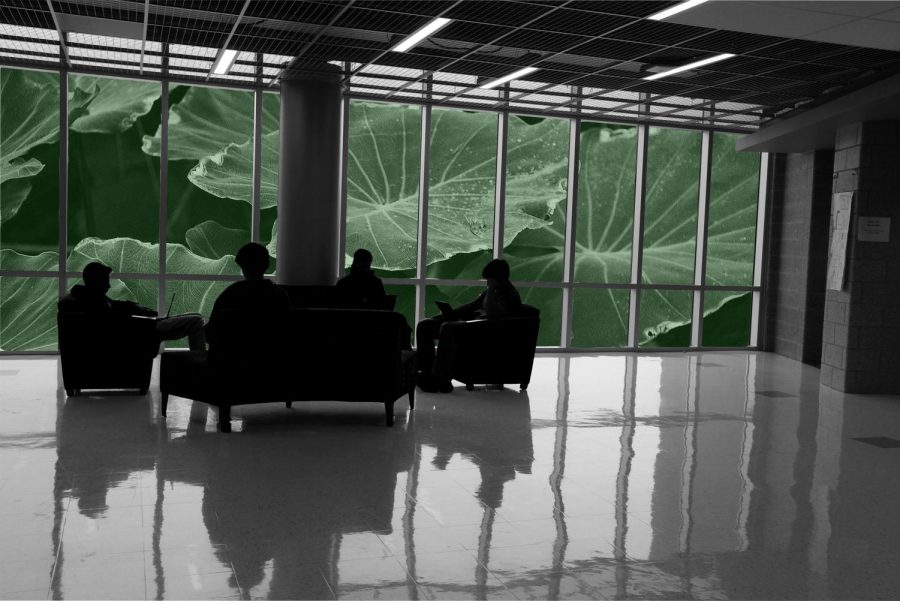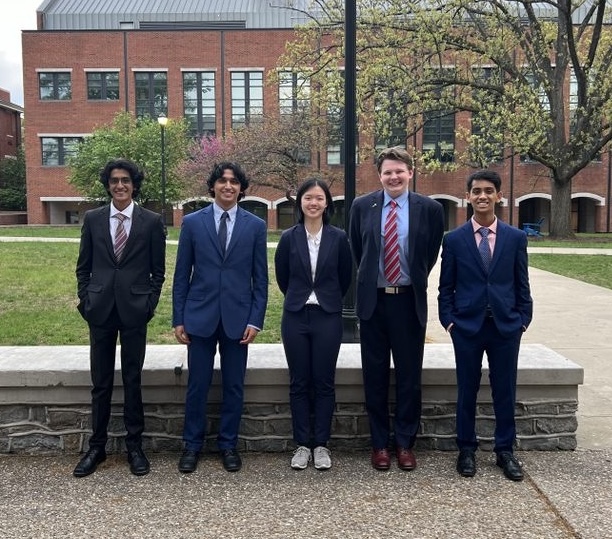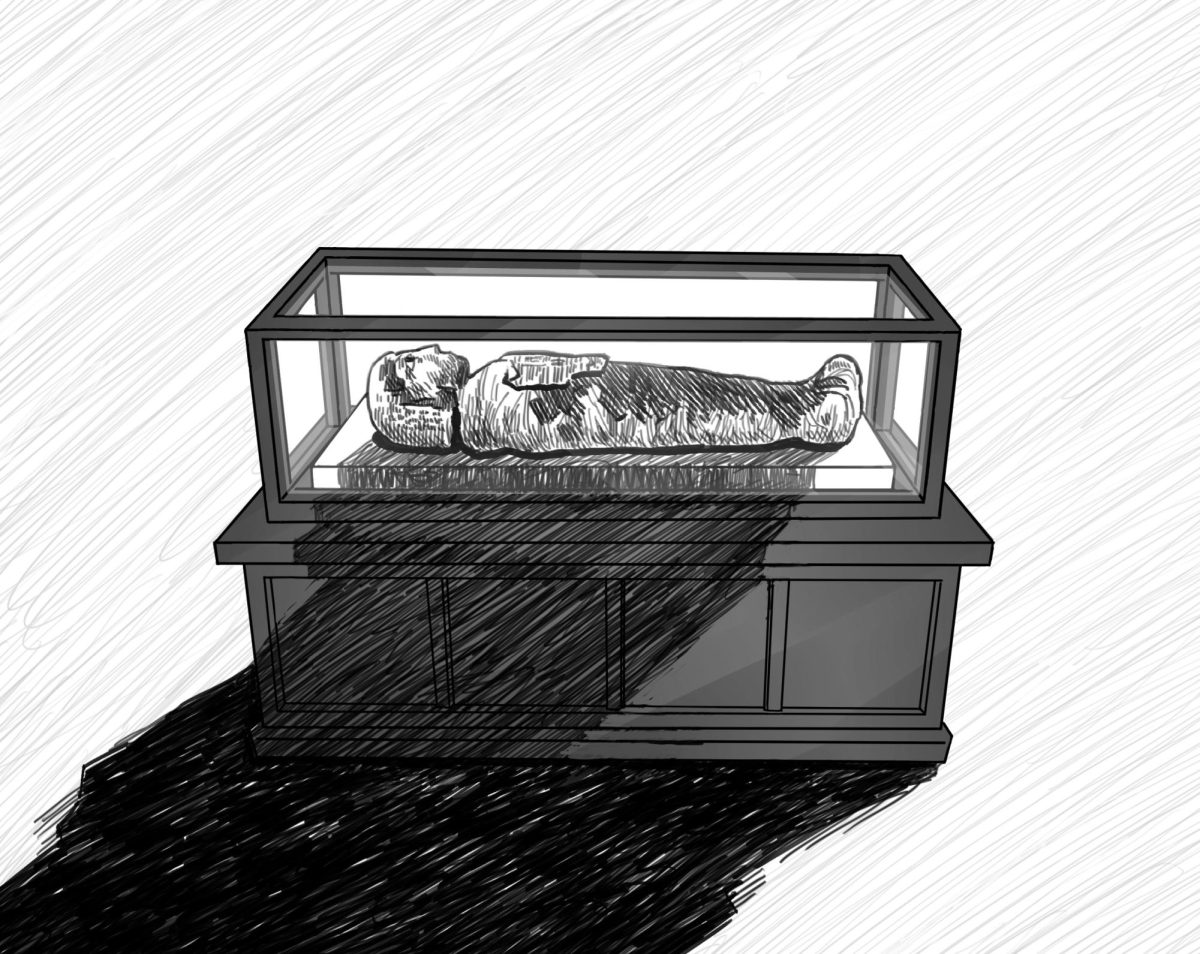Energy-friendly, central-friendly
Despite being a leader in the district when it comes to energy-saving initiatives, between academics, athletics and daily obligations, few students and faculty often think about the energy keeping Naperville Central comfortable and what it takes to keep each hallway and classroom brightly lit. This month, Claire Paschke and Laaiba Mahmood of the Central Times delve into Central’s energy consumption, the changes that have been made in the past few years and plans on the horizon to maximize energy efficiency.
February 4, 2019
Retrofit
Older systems and machines are far less efficient than newer updated models, so when Central completed its latest large scale remodel in 2011, the district saw immediate benefits.
“I’ve noticed a large amount of savings with frequency drives, and we’ve been looking at other units that we can change to a soft start,” said Cuauhtemoc Zarate, Central’s Building Facility manager.
By allowing fans and motors to slow down when demand for air is lower in certain parts of the building, frequency drives help cut down on energy consumption compared to fans left continuously running.
Soft starts for large pieces of machinery are also beneficial as they cut down on energy demand charges.
“Instead of having your fan run on high speed all the time, this would be like having your fan start gradually and then ramp up to the necessary speed,” Zarate said. “These are big motors that take a huge amount of energy to start up.”
Energy efficient lighting was also a major change the district wanted to implement during the latest renovation.
Outdated, energy-draining light bulbs were switched to T8 32-watt fluorescent lights throughout the school complete with motion detectors in classrooms.
“When the classroom is done for the day and there is no occupancy, the sensors detect a lack of movement and the lights turn off after a period of time,” Zarate said. “This works, too, when the person wants to enter a room, they turn on right away.”
Motion sensors allow Central to save energy and cost, even when students or staff might forget to shut fixtures off.
“You have a very nice lighting here,” said Eric Militz, manager of Energy Management for District 203. “The motion detectors help to even the playing field so you have an extremely efficient building here at Central.”
“Automated Logic,” a new building automation system, was also added in 2011 to help staff better manage the interior of the school.
“Typically we would run a holiday building schedule Monday through Friday, and with the system you can customize it to schedule in a holiday where all of the equipment can be turned off instead of wasting energy,” Zarate said.
Because of the way classrooms are designed, changing fixtures has a smaller effect on cost and energy consumption.
“Classroom temperatures are interior for the most part, so they have very little to do with energy savings,” Militz said. “But when we can, we shut off the heat and use the energy manager to drop the heat in the perimeter rooms during breaks.”
Looking towards the future… improving the present
Lining the ceilings of Central’s hallways are hundreds of lighting strips, each of which uses two 75-watt fluorescent light bulbs. These account for a large amount of energy usage and cost for keeping the hallways well-lit.
“If we could convert that to an LED that could be huge,” Militz said. “I’ve been looking at this for about three years, but the price tag is outrageous. You don’t need that much wattage in the fixture, [but] it’s more aesthetic, which is one of the biggest issues throughout the district.”
Senior Aymun Khan believes this type of lighting would be worth the investment.
“They [LEDs] provide virtually zero UV emissions, have dimming capabilities, are safer than regular lights, are very energy efficient and last 40 times longer than the average incandescent light bulb,” Khan said.
Along with their cost and energy efficiency, the concern for fixture appearance largely influences whether they are used.
“At Door One, if you look up, that type of lighting used to be in the cafe,” Zarate said. “So we had to figure out a way to compromise with aesthetic versus cost effectiveness.”
Out of all areas in the school, the pool consumes the most energy.
“We have to air condition or dehumidify even in wintertime and have to keep the temp much higher,” Militz said.
The lighting in the pool facility is what causes there to be such high energy consumption.
“There are 76 bulbs [and] the older styles [make] an enormous amount of heat,” Militz said. “They produce the equivalent of having three home furnaces running non-stop, and to combat this heat air conditioning is used.”
To find an alternative, cost and energy efficient option, LED strips of 250 watts, compared to the previous 1,000 watts, are being tested.
“We are putting in LED light,” Militz said. “We’ve put in one strip right now to test the environment, and we are changing to a 250 watt LED fixture. LED is sensitive to heat so we are doing it gingerly.”
Although the district and the latest renovation have made Central more energy efficient, more can always be done to improve in the future.
“Students and faculty should analyze the amount of energy they waste a day,” Khan said. “This could be pondering how long they wash their hands for, how long they leave the shower on, how much electricity they waste by leaving the lights on. I believe we can help minimize the environmental impact we have on the world.”
Science teacher Michael Jarvis believes simple steps like turning off classroom technology when it’s not in use could make a big difference.
“The school is a lot better than it was once upon a time,” Jarvis said. “Having said that, teachers don’t always turn off projectors as soon as they should, and when we used to have more desktops those would be left on all the time. We’ve gotten a lot better, but there are areas we can still improve.”
Calculating the costs
Central buys electricity from the City of Naperville, which brings it in from other sources, specifically from southern Illinois and Kentucky.
“They charge us $23 for one kilowatt [of energy] demand regardless of how much is used,” Militz said. “In a classroom you sit in, there is probably one kilowatt of energy [used] for that hour that the classroom lights are on. Every month we get hit for the 1 kilowatt per classroom. You can turn a classroom on for 15 minutes [and] we have to pay a penny and a half but still get charged that $23.”
Many of the fixture changes are made specifically to target the cost from the demand charge on top of the charge for energy actually used.
“When we changed the lighting in the pool and the field house we are trying to [decrease] that [$23],” Militz said.
Each month, the energy costs are about the same. Each fiscal year is measured from July of the previous year to June of the current year.
“For that first month of school in August, the electric cost was $44,000, and then we pay taxes on that, so about $46,000 for 30 days,” Militz said. “For the entire [2017-2018] fiscal year, Naperville Central paid about $464,000.”
In comparison to Naperville North, Central’s bill was lower for that same period.
“North’s electric bill was around $500,000 even though they are smaller in square footage,” Militz said.
Considering Central is a newer building, this discrepancy is hardly surprising.
“The main thing is just to switch to higher efficiency materials as they become available,” Jarvis said. “A lot of our lights are higher efficiency than they were once upon a time, and there is natural lighting in a lot of classrooms so you don’t have to have all the light banks on all the time.”
As other schools in the district plan future renovations based on Central’s changes, there are considerations for everyone’s lives.
“If each student and faculty member takes the time to ponder their actions and the effects they have on the environment, I believe we can help minimize the environmental impact we have on the world,” Khan said.













